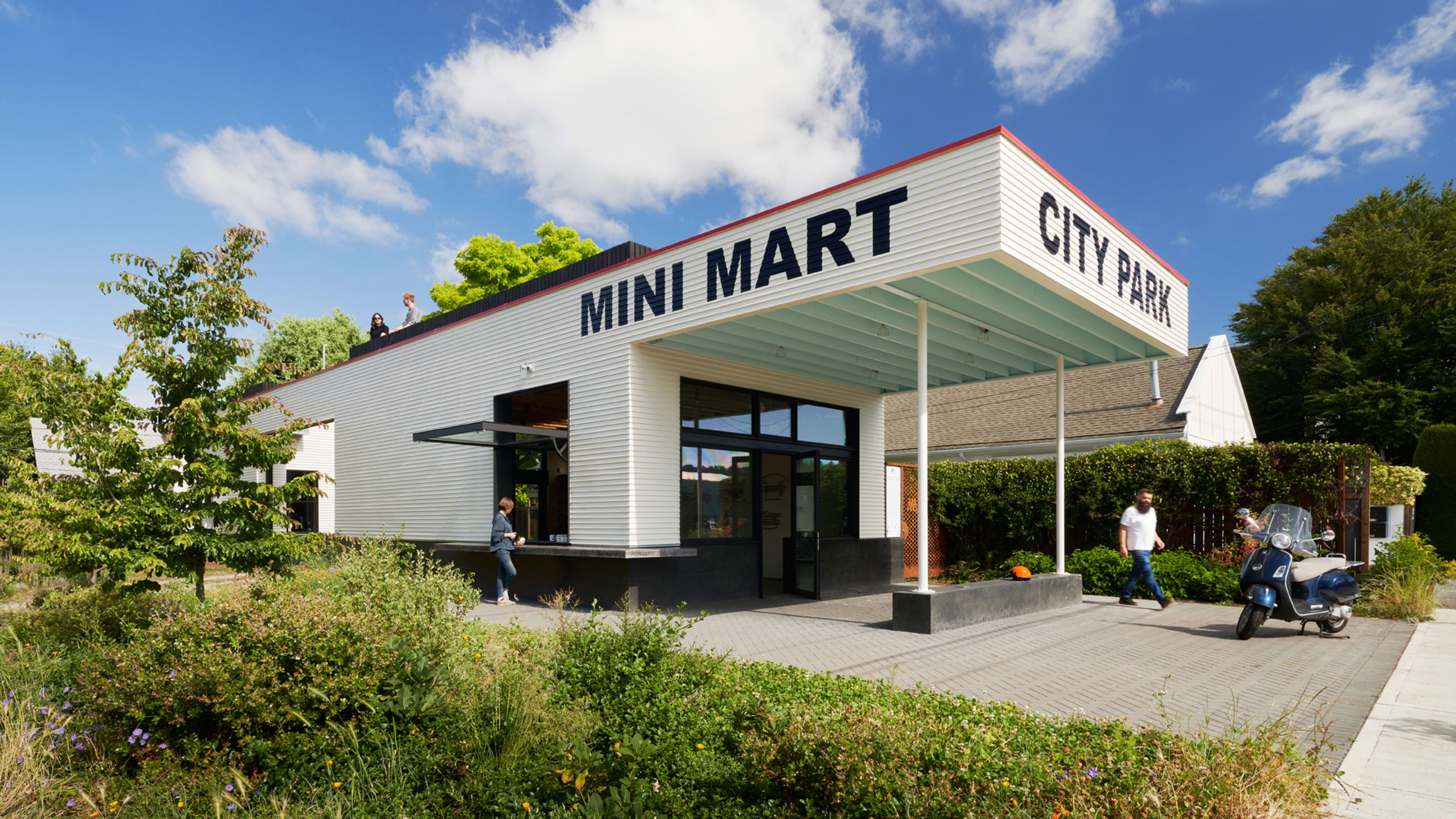As gas stations lurch toward obsolescence in the age of electric vehicles, the land they use is becoming a widely distributed real estate development opportunity. One project in Seattle shows how former gas stations can take on dramatically new lives, even with all their complicated environmental baggage.

Mini Mart City Park, in the Georgetown neighborhood of Seattle, is an art venue, community space, and publicly accessible park built on the site of a gas station dating back to the 1920s. Decommissioned in the 1980s, the gas station was part of a long and dirty industrial history in this part of town, which borders Boeing Field, a small historic airport five miles south of the city’s downtown. “It was actually used for underground jet fuel storage back in World War Two,” says architect Aimée O’Carroll. “It’s always been a very brownfield site.”

GO’C, the architecture and design firm O’Carroll cofounded with architect Jon Gentry, was introduced to the Mini Mart site in 2014, a few years after it had been purchased by SuttonBeresCuller, an arts collective. They had wanted to turn it into a community arts center and green space, but its polluted soil and the broader environmental issues in the surrounding industrial area wrapped a lot of red tape around the prospect of building anything. After years of environmental assessments that determined the site was safe to remediate and build on, the artists formed a nonprofit and began raising money to tackle the challenge.

Though the original intention was to reuse the filling station building as the main venue for the project, extensive structural issues meant it had to be demolished. GO’C’s design held on to that gas station past, creating a drive-up style plaza fronting a space that looks, from the outside, like a convenience store.

Dubbed Mini Mart City Park, the site opened late last year. The front shop-like space is an art gallery and community meeting area, and an auxiliary building on the back of the lot holds accessible bathrooms and the site’s utilities. Between the buildings is a courtyard for another social space, and above, a bridge connects the roofs of the two buildings, creating a patio and viewing deck for the small passenger and cargo planes that still fly directly overhead on their approach into the adjacent airport. The formerly paved area around the gas station has been landscaped with native plants and is now a small pocket park for an increasingly residential neighborhood.

The project is one example of a possible future for disused and vacant gas stations. “There are 700 derelict gas stations in the Puget Sound region,” says Gentry. Nationwide, that number is considerably higher, and expected to grow. Currently, there are about 118,000 convenience store/gas stations operating in the U.S., and as car companies shift production from internal combustion engines to battery electric vehicles, more and more will be decommissioned.

But as GO’C and SuttonBeresCuller found, reusing an old gas station site is also a matter of environmental remediation. The buildings sit above a plume of gasoline about 16 feet below the surface, so before the site could be repurposed, residual contaminant chemicals and vapors in the soil and groundwater below had to be removed. That called for the underground installation of a combined air-sparging and soil vapor extraction remediation system.
And extraction remediation is ongoing. The release of decontaminated air and vapors comes out of a chimneylike pipe that the designers chose not to hide, instead placing it in the center of the roof of the auxiliary building. “We wanted that to be a visual,” says Gentry. “The working organs of the system are revealed, releasing that air that’s been scrubbed.”

Mini Mart City Park was entirely grant funded. Contributions from the city and county made an unconventional project possible, but also dragged out its timeline. “A lot of the funding was directed toward very specific things,” O’Carroll says. “They had to be careful about how fast the project was being built because certain allotments of money could only be used for certain things.”

In total, the project took eight years, with GO’C providing initial designs pro bono. Despite the challenges, the project is an example of how contaminated gas station sites can be repurposed and cleaned up at the same time. “The environmental aspect of it is a model that is not really done very often,” O’Carroll says.

And though she says the gas station design language is part of the project’s unique character, its most important aspect is probably the way it addresses the environmental challenges that gas stations of the past helped create.
“With a site like this that’s surrounded by contamination, you’re trying to consistently filter that out, knowing that it’s going to slowly leach back into the soil,” says O’Carroll. “We are kind of working from the ground up on an ongoing cycle of renewal.”
Recognize your brand’s excellence by applying to this year’s Brands That Matter Awards before the final deadline, June 7.
Sign up for Brands That Matter notifications here.
